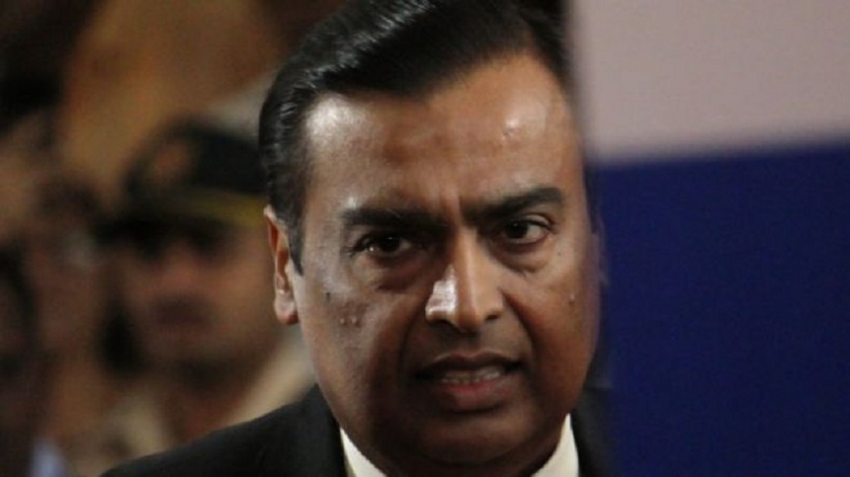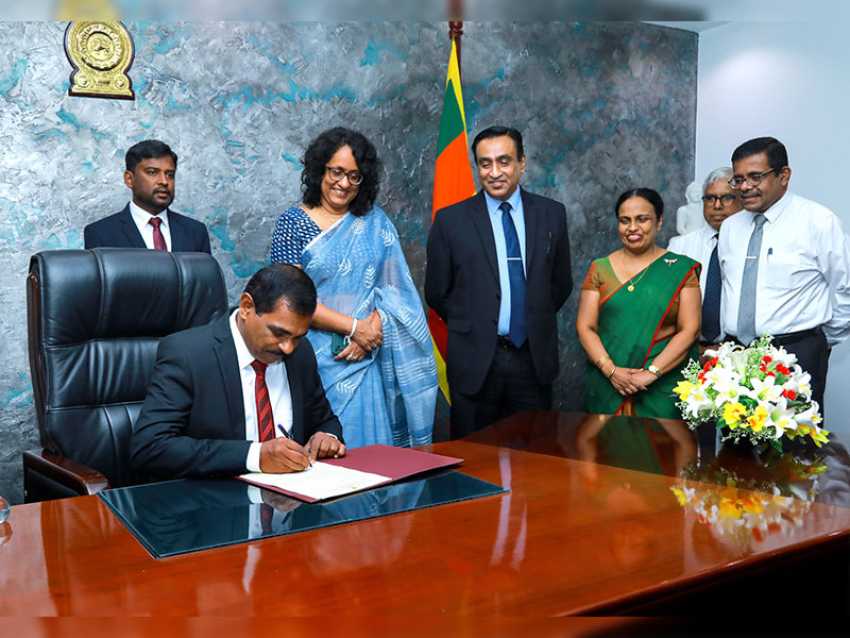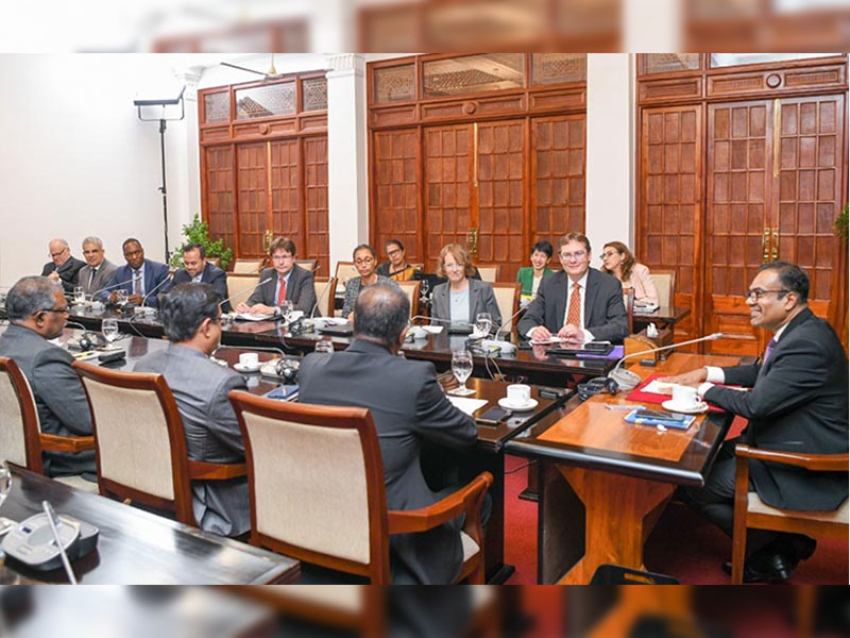A conglomerate run by Asia's richest man has started a service that aims to compete with Amazon in India.Mukesh Ambani's Reliance Industries said it had been inviting people to sign up to its grocery delivery service.The company is aiming to use its massive mobile phone customer base as a springboard for the business.The new e-commerce venture could become a major challenger to India's existing online retail giants.Two subsidiaries of Mr Ambani's business empire, Reliance Retail and Reliance Jio, said they had soft-launched the venture, called JioMart.JioMart says it offers "free and express delivery" for a list of grocery goods, which currently numbers some 50,000 items.Unlike its rivals, JioMart will connect local stores to customers via an app rather than providing and delivering the goods itself.India's online grocery market is in its infancy - currently estimated to be worth around $870m a year, with just 0.15% of the population using such services.
However, analysts predict the sector could see annual sales of around $14.5bn by 2023.Grocery delivery has long been tipped as the next frontier in the battle for business in India.A staggering number of internet and smartphone users - plus an unorganised grocery delivery sector - make it a promising market for app-based services.Some of the world's largest and best-known technology companies, including Walmart and Amazon, are hoping to cash in too.This should be a cakewalk for Reliance - it already has hundreds of millions of subscribers to its telecoms network, and operates its own grocery stores as well as retail stores for international brands.Plus it has the advantage of being an Indian company. Amazon and Walmart have been held back from expanding in this space by government laws aimed at protecting domestic business.
There are Indian competitors operating in the market already - Big Basket and Grofers are the most well-known.But they've had to put the brakes on expanding or tweak their business models to meet the challenges of operating in India, such as poor infrastructure, unreliable mobile networks and strict labour laws.Reliance has a reputation for disrupting markets it starts businesses in, be it power, oil, retail or telecoms. Its foray into e-commerce is unlikely to be any different.
India's e-commerce market is currently dominated by Amazon and Flipkart, which is owned by Walmart.Both companies suffered a setback last year when the Indian government introduced new laws that restrict foreign-owned online retailers from selling goods from their own subsidiaries.This helped give Indian companies, which are not affected by the new rules, an edge over their foreign rivals.
Mr Ambani, who is the chairman of Reliance Industries, has an estimated fortune of more than $60bn (£45bn).The group's core business is oil refining but it also has major investments in other sectors including retail and telecoms.Reliance Retail owns grocery stores in India, runs outlets for global brands, including Hugo Boss and Burberry, and in 2019 bought the British toy shop Hamleys.Reliance Jio is India's second-largest telecom operator, with more than 360 million subscribers.
Why did Walmart buy India's Flipkart?
By Prasanto K Roy
Technology writer
11 May 2018
Share this with Facebook Share this with Messenger Share this with Twitter Share this with Email Share
Image copyrightREUTERS
Image caption
Flipkart is India's biggest e-commerce company
Global retail giant Walmart has paid $16bn (£11.8bn) for a majority stake in Flipkart, India's biggest online retailer, making this the world's largest ever e-commerce acquisition.
Walmart, best known for its grocery stores, discount department stores and hypermarkets, is ubiquitous in the US. But its sales have barely grown offline and its online sales account for just a little more than 3% of its business in the US.
Flipkart, founded in 2007 by Sachin Bansal and Binny Bansal (no relation), is India's biggest e-commerce company and has had high-profile investors including Microsoft, Tencent and Softbank.
Walmart wins battle for India's Flipkart
Flipkart-Snapdeal mega-deal collapse
But after Walmart announced the deal on Wednesday, its shares tumbled 4%, a likely reflection of the high price the company paid for Flipkart.
Why did Walmart spend so much on Flipkart?
"India is one of the most attractive retail markets in the world, given its size and growth rate," Walmart's president and CEO Doug McMillon said in a statement.
Walmart is betting on the fact that India's e-commerce market, pegged at a modest $38bn in 2017, is expected to grow up to $200bn by 2027.
E-commerce currently makes up less than 4% of the retail market in India, but that's predicted to change as the number of Indians using smartphones (and the internet) increases rapidly in the next decade.
Image copyrightGETTY IMAGES
Image caption
Walmart is ubiquitous in the US
Although Walmart has 21 "cash-and-carry" wholesale stores in India that sell to businesses, it has no other retail presence in the country. So this acquisition allows the company to jump straight into a small but growing e-commerce market with about 100 million customers.
This deal is also a new front in Walmart's battle with Amazon, the global leader in online retail, which accounts for 44% of the US e-commerce market.
How big is Flipkart?
The company sold products worth a total of $7.5bn in the financial year that ended in March 2018 - the sales had grown by 50% since the previous year. Its net sales, after discounts, returns and cancellation, were worth $4.6bn.
Amazon, too, made a bid for Flipkart but the merger could have faced severe scrutiny from India's antitrust regulator as their combined sales would have added up to almost 90% of India's e-commerce market.
Why did Walmart's stock crash after the deal was announced?
Analysts believed that Walmart overpaid for its stake in Flipkart. This widely-held view was echoed on Wall Street, where Walmart shares dropped to their lowest intraday price since October 2017, wiping $10bn off its market capitalisation.
Image copyrightAFP/GETTY
Image caption
Flipkart claims more than 100 million registered users in India
This is because Flipkart is not expected to be profitable for some years and the Indian e-commerce market is small by global standards - 100 million customers in a country with about 1.3 billion people.
But the deal still gives Walmart the fastest entry possible into one of the most promising, albeit difficult, e-commerce markets.
Walmart said in a media release that Flipkart will leverage Walmart's diverse retail expertise, merchandise supply-chain knowledge and financial strength, while Flipkart's "talent, technology, customer insights and agile and innovative culture" will benefit Walmart.
Is this a good deal for Flipkart?
Yes, according to most experts. After Walmart bought the controlling stake, Flipkart is valued at more than $20bn.
The deal also saves Flipkart, which was running out of cash in its battle with Amazon. Both competitors have been "burning cash" in massive sales and discounts pegged to Indian festivals in a bid to acquire more customers.
Image copyrightGETTY IMAGES
Image caption
Sachin Bansal is one of the founders of Flipkart
Amazon runs a profitable business worldwide, thanks to its cloud computing service, and it has the cash to take on newer markets.
Flipkart, however, needs the financial strength Walmart offers. It has also managed an excellent valuation, by all accounts, giving both its co-founder Sachin Bansal, and several of its key investors, profitable exits.
This is the highest price any foreign company has paid for a stake in an Indian company. New York-based angel investor Gautam Gandhi said Flipkart's founders had been elevated from "role models to demi-gods for aspiring entrepreneurs".
Was this a good deal for Flipkart's other investors?
Given Flipkart's high valuation of $20bn, investors who exited got a good deal.
Venture capital firms Accel and Tiger Global invested more than eight years ago when Flipkart was valued at just $50m - and they have now exited with more than 400 times what they invested.
The SoftBank Vision Fund led by Masayoshi Son was a big beneficiary of the deal - it had invested $2.5bn in August 2017 for a 20% stake and it exited with $4bn.
Flipkart co-founder Binny Bansal retains his stake. So do Microsoft, eBay and China's Tencent, who invested a total of $1.4bn in April 2017.
What does Walmart bring to the table?
Apart from capital, Walmart brings expertise in online groceries and a strong food supply chain.
"We aim to become the best food retailer in the world, and that needs investment in supply chains to build those capabilities," Rajneesh Kumar, corporate affairs chief at Walmart India told the BBC.
Image copyrightREUTERS
Image caption
Flipkart co-founder and chief executive Binny Bansal (right) with Walmart chief Doug McMillon
Walmart, he added, will also focus on sourcing from India for its global operations. "We are already sourcing handicrafts, apparel, food products like rice, from India…we will ramp that up."
What does the rest of India's e-commerce market look like?
The Indian e-commerce market, beyond retail, has more than a dozen major Indian as well as foreign players and brands. Most of the market leaders have foreign funding - from Softbank, Alibaba, Naspers etc.
In the taxi aggregation market, the Indian start-up Ola competes fiercely with Uber although both have a common shareholder, Softbank.
Bhavish Aggarwal is the founder of Ola, a taxi aggregator that competes with Uber
Alibaba and Softbank-funded Paytm, which dominates the busy mobile payments market, now faces competition from Google, Facebook and Paypal.
The online travel market is dominated by two Indian players, MakeMyTrip, which is funded by Naspers Ltd and the Chinese travel operator Ctrip, and the government-owned IRCTC, which sells railway tickets.
Why Amazon and Flipkart will spend billions in India
By Prasanto K Roy
Technology writer
14 August 2014
Share this with Facebook Share this with Messenger Share this with Twitter Share this with Email Share
Image copyrightGETTY IMAGES
Image caption
Amazon launched its first site in India in June 2013
Flipkart, India's biggest online retailer, has been in the news a lot since its $1bn funding announcement on 29 July.
That is among the world's largest funding rounds for web businesses, exceeded by only a few firms such as Uber and Facebook.
But some of its thunder was stolen the next day, when Amazon announced a $2bn (£1.2bn) investment in its India operations.
"We see huge potential in India," CEO Jeff Bezos said in a statement. "It's on track to be our fastest country ever to get to $1bn in gross sales."
Snapdeal is another big e-retailer. It is backed by eBay, which also has its own marketplace in India. And Walmart's entry into Indian e-commerce is imminent.
Image copyrightAFP
Image caption
Flipkart is India's biggest online retailer
Image copyrightAFP
Image caption
India's' online retail market is expected to grow rapidly in the coming years
Amazon entered India just last year, and has some catching up to do.
The company's India head Amit Agarwal would not mention a timeframe for either the investment or the billion-dollar sales target, which Flipkart already achieved last year.
Flipkart was founded in 2007 by two former Amazon employees, Sachin Bansal and Binny Bansal, both now 32. They started selling books and went on to electronics and other goods.
The firm now has 22 million registered users, and handles over 150,000 shipments a day. But it is losing money - 2.82bn rupees ($46m; £27m) net losses on revenues of 11.8bn rupees for the year ending March 2013.
Spending a billion dollars
Backed by a major technology investment, this will change the face of online shopping and could make us one of the biggest Indian companies in the world.
Sachin Bansal, Co-founder and CEO, Flipkart
Deep Kalra, co-founder of travel portal MakeMyTrip, is impressed by the e-retailer. "They've super-scaled. That isn't easy," he said. "Now they're building a war chest. This is a big money game."
So what will Flipkart do with a billion-dollar war chest?
They will probably spend much of it on marketing and marketplace development, says Alok Mittal, who heads India operations for the US-based venture fund Canaan Partners. He points out that Flipkart has also been buying companies.
In May this year, Flipkart bought rival Myntra.com, in Indian e-commerce's biggest merger (over $300m). It has previously made other acquisitions.
In an emailed response, Flipkart co-founder and CEO Sachin Bansal said that the firm's focus was to build an e-commerce ecosystem in India, where more than half a billion internet users are expected to be online in the next five years.
"To get hundreds of thousands of entrepreneurs online, we have to solve logistics, payments and other problems," he said.
Flipkart's latest round of funding puts its value at $6bn to $7bn, overtaking even India's biggest real-estate company, DLF.
Investor Mahesh Murthy of venture capital firm Seedfund says that with each round of funding, Flipkart has said that it now has enough cash to make it sustainable. "And then it's gone on to raise yet another, larger round of cash." It could, he says, be accelerating its spend in a "last-man standing game".
Indian e-commerce sales
Image copyrightAFP
2012-13 - $2.3bn (0.5% of total retail sales)
2014-15 - $8.3bn (projected)
Annual growth till 2014 (7 years): 56%
Source: Crisil
Or else, he says, investors, who own over four-fifths of Flipkart, could be trying to raise its valuation en route to an exit.
Despite the hype, online retail was just 0.5% of India's total retail market of $415bn last year, according to ratings and analytics firm Crisil.
But it has grown at 56% annually for the past seven years, to a projected $5.5bn this fiscal year, and could reach $8.3bn next year.
Traditional retailers in many sectors are worried.
Especially technology and telecoms dealers, whose buyers are tech-savvy and have quickly taken to buying online. Some report losing up to 35% of business to online competitors.
Scarily low prices
The first Saturday of August saw a large gathering at a south Delhi hotel, discussing a common enemy - online retail. The meeting represented big domestic technology product sellers in India.
Their bugbear: low online prices, often below the dealers' own purchase prices. They are now planning to explore setting up their own national web-portal for technology products.
Buyers love the low prices.
Delhi-based Gaurav Banka, 34, is fond of gadgets, and is a frequent online shopper who has made purchases on numerous sites.
"I find the cheapest electronics on Snapdeal, and clothing on Jabong," he said. "But it's not just the price. I look at seller reputation and delivery time." Mr Banka subscribes to the premium Flipkart First service (similar to Amazon Prime), but buys mainly from one seller there.
Image copyrightAFP
Image caption
Many buyers use their smartphones to buy items online
There is another reason for offline retailers to worry: their expensive showrooms. Customers come to see products - and then buy them cheaper online.
I saw this in action in the Delhi suburb of Gurgaon, at a showroom run by electronics retailer Croma, owned by the Tata Group.There, Ritu Sharma, 23, asked to see USB hard drives, memory sticks and power-packs for phones. She browsed for half an hour. Then she took out her iPhone, looked up the prices on her Snapdeal app, and bought all three products online - from inside the showroom."Why did you do that?" I asked her."Why not?" she said. "I just saved 1,400 rupees. I'm heading out to spend it on a beer at Striker (a pub)."
India's richest man Mukesh Ambani buys iconic toy store
10 May 2019
Share this with Facebook Share this with Messenger Share this with Twitter Share this with Email Share
Image copyrightGETTY IMAGES
Image caption
Hamleys is the world's oldest toy retailer
India's richest man Mukesh Ambani has bought the iconic British toy retailer Hamleys for an undisclosed sum.
Reliance Brands Limited, which is owned by Mr Ambani, said it had signed an agreement to buy the company from China's C Banner International which had acquired it in 2015.
Hamleys, which was founded in 1760, is the world's oldest toy retailer and has 167 stores across 18 countries.
Reliance Industries already operates 88 Hamleys stores across 29 Indian cities.According to Forbes, the 62-year-old Mr Ambani is worth $50.7bn."The worldwide acquisition of the iconic Hamleys brand.... is a long cherished dream come true," Darshan Mehta, the CEO of Reliance Brands Limited, said in a statement.
Hamleys had last year reported a £9.2m loss, blaming Brexit and the threat of terrorism for the downturn.It had opened four stores in the UK but later closed two.However its flagship store in London's Regent Street, which opened in 1881, continues to be one of the city's major attractions.Set over seven floors, it has an estimated 50,000 lines of toys on sale.




















